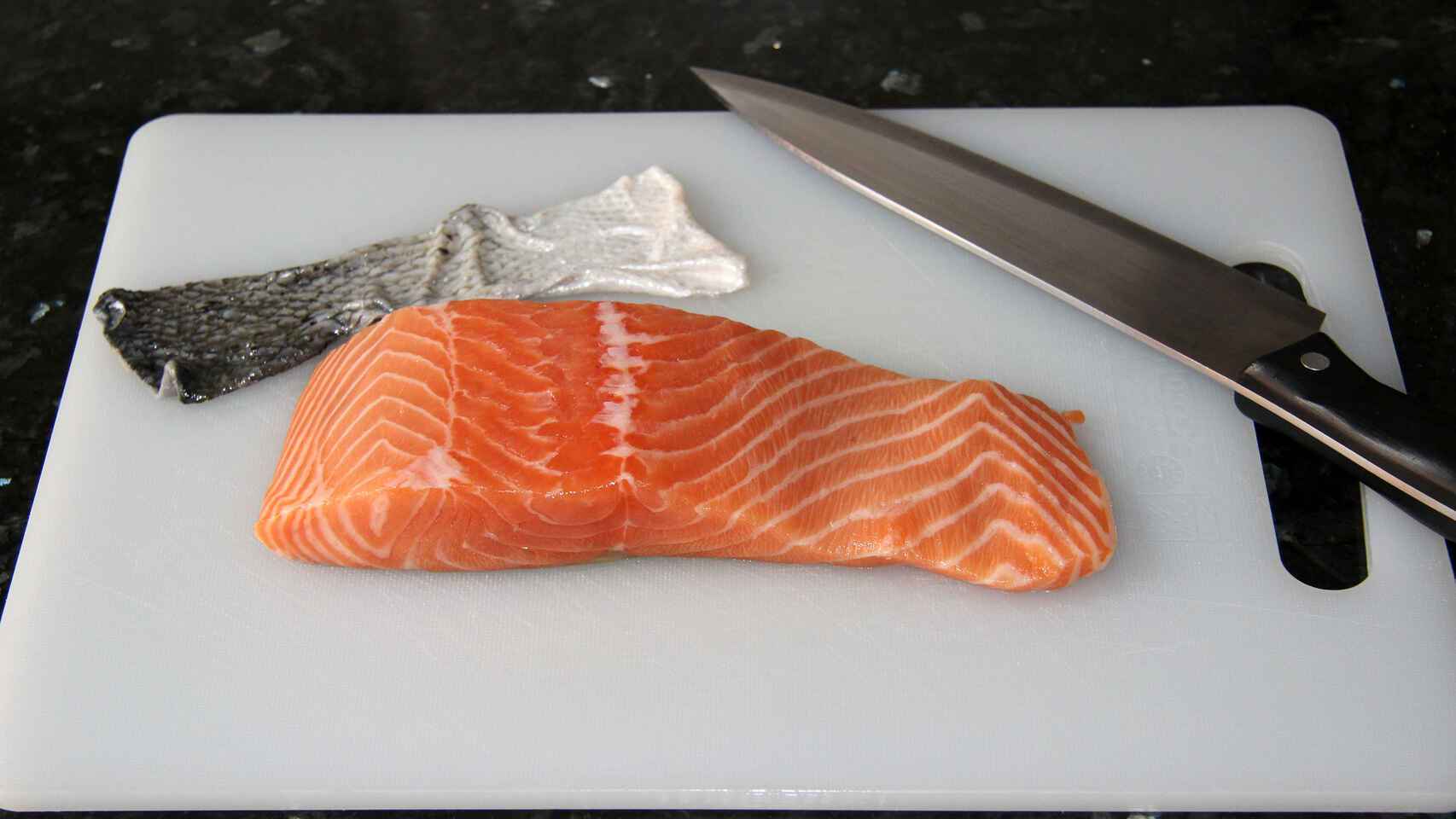Related news
The art of cooking alludes to a multitude of senses apart from the most obvious, taste. Smell can make the body react like the bell to Pavlov’s dog, while the presentation and appearance of the food can add or subtract in terms of how palatable the dish appears.
Appreciating the aspect of the food that is eaten is inherent to the human being, even his own artistic genre, still lifes, has been dedicated to him. It has also inspired books, films and even series, which at first do not focus on gastronomy, such as Hannibal, a cooking-loving killer played by Mads Mikkelsen. Because, When a food changes in appearance when it is cooked, it arouses both curiosity and concern. This is what happens with salmon fillets and the white substance that oozes from them when they are cooked, something that does not always happen.
It is true that this substance can make salmon, a nutritious (and expensive) delicacy, lose some of its charm, but it is still safe to eat. “That substance, which oozes from the salmon fillet, is a protein that melts slightly. Basically it is produced when the piece still retains some water that comes out during cooking then the salmon protein breaks down from the fillet and coagulates outside, mixing and enriching this water. Whose composition is similar to egg white ” Yago perez, nutritionist dietitian, specialized in overweight, dietary treatment of diseases and sports nutrition.
Ugly but safe
This protein, albumin, is safe for consumption, something confirmed by the Veterinary Department of the Complutense University of Madrid. In addition, it is not only present in salmon, also in other fish such as herring, tuna, cod and trout. Likewise, it is in other foods such as dairy (lactalbumin), egg white (ovalbumin) or muscle tissue (serum albumin), such as salmon.
When salmon is raw, it is impossible for the human eye to appreciate the albumin inside. Something that changes as it is prepared, is when this substance oozes, thickens and mixes with the water in the food. Thus becoming the sticky white substance you don’t want to find in salmon.
As for whether it presents an extra contribution of protein to that which salmon already has, the Institute of Science and Technology of Food and Nutrition (ICTAN) has not been able to give an answer, although the consulted veterinarian points out that, when leaving its own food, technically it would not be an extra, although by not evaporating during cooking, physically seeing the substance ensures that that protein is ingested (as long as it is not removed).
As indicated by Pérez, albumin can be found in blood plasma, in milk, in seeds and, above all, in egg white. It is the main protein in the blood with a concentration that ranges between 3.5 and 5.0 grams per deciliter, assuming 54.31% of plasma protein. It is synthesized in the liver and has multiple functions in the body such as the transport of fat-soluble hormones, the transport of unconjugated bilirubin, the control of pH, regulates extracellular fluids, transports free fatty acids and maintains oncotic pressure.
Avoid its appearance
Whether the albumin makes an appearance does not depend on the cooking time or the temperature, although the longer the fillet remains in the pan, the more liquid the muscles of the fish will exude. Consuming the salmon raw, as in sushi, or marinated, prevents you from dealing with the sticky substance. However, if cooked is preferred, the most effective is to immerse it in brine (salt water) for 10 minutes before doing it.
Afterwards, it is dried well with kitchen paper, to eliminate the humidity as much as possible, and it cooks. In the case of sirloin steaks, You always have to start with the skin, until it is crunchy. It depends on the type of salmon and the cut, the pieces that you are going to cook may have more or less amount of protein, so making this substance not appear even 1% is impossible to predict.
Remember that the higher the temperature at which the piece is cooked, the more liquid and protein it will exude, but if we lengthen the cooking times by using too low a temperature, the probability that albumin clots will appear is also high. In the end, brine and practice are the most efficient, although keep in mind that, When this protein appears, the salmon does not change its flavor nor is its nutritional value different. Appearance is not the most important thing, especially when it comes to food.
Follow the topics that interest you
Reference-www.elespanol.com
